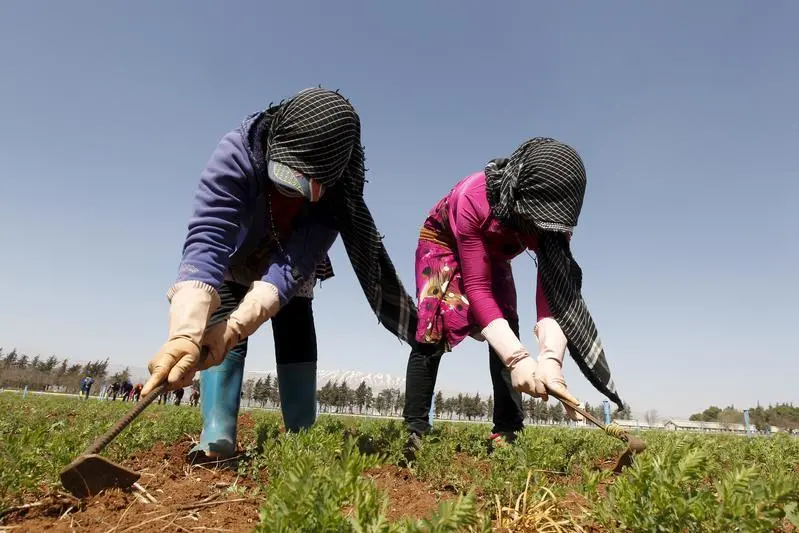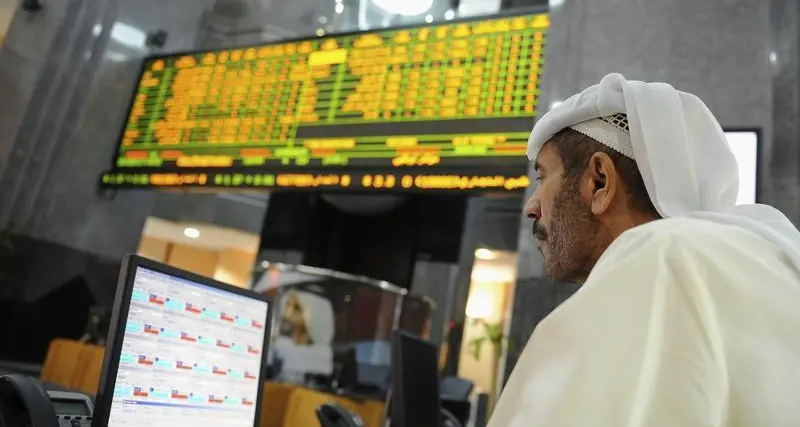PHOTO
A lack of jobs in Lebanon means many Syrian refugees can't find work
Perhaps few issues in Lebanon are cause for more spirited debate than access to employment for Syrian refugees. Yet due to insufficient data, the economics of the issue have only been credibly argued in the most macro of terms. Nevertheless, a series of new development projects and policy reforms could provide more employment opportunities for both displaced Syrians and Lebanese citizens. This was a key theme of an international donor conference held in London in February 2016. Speaking at the end of the event, the UK’s then-International Development Secretary Justine Greening announced, “And today we’ve also made a second critical choice on supporting jobs for refugees and economic growth in the countries hosting them.”
The donor conference – which secured pledges totaling $12 billion in grants and loans aimed mainly at Syria, Jordan, Lebanon and Turkey – also resulted in the creation of the Concessional Financing Facility for the Middle East and North Africa (MENA CFF), which gives the aforementioned middle-income countries access to low-interest, long-term loans that they were previously considered too wealthy to qualify for. One project to be financed via this facility is being proposed by the Council of Reconstruction and Development (CDR) that will be enabled by $200 million in concessional funding, according to a description obtained by Executive. Through the rehabilitation of 500 km of Lebanon’s deteriorating roadways, the Road and Employment Project is expected to create 1.5 million labor days of work, but is not expected to begin issuing contracts before the start of 2018. Supply chain industries and up to 25 contractors are also set to benefit from the project, which is to be conducted in partnership with the World Bank.
Trouble cooperating
Prior to the refugee crisis, Syrians were permitted to work without permits in Lebanon due to a bilateral agreement (the “Treaty of Cooperation”) between the two countries that resulted in an open-border policy. Estimates of how many Syrians were working in Lebanon before the crisis are imprecise (ranging between 300,000 and 600,000). The consensus of several reports on the topic, however, suggests that regardless of the actual number of Syrian workers, they were a source of cheap labor heavily utilized by the construction and agriculture sectors. However, as refugees began streaming across the border, Lebanon began to implement a number of policy shifts that largely reversed this precedent.
In October 2014, the government began a series of legal changes that inhibited refugees’ access to employment. Syrians residing in Lebanon were restricted to working in three sectors where competition with Lebanese counterparts was thought to be low. These sectors are identified as construction, agriculture and cleaning services – and the latter was expanded to ‘environment’ in 2015. In January 2015, a new regulation required refugees registered with UNHCR to sign pledges not to work at all. The government dropped this regulation in mid-2016, enabling UNHCR registered refugees to seek employment within the three preauthorized sectors.
An uncertain impact
Measuring refugees’ impact on the job market, or the efficacy of protectionist restrictions, has proven difficult due to a lack of baseline statistics on the Lebanese workforce. Annabella Skoff, the chief technical advisor to the International Labor Organization (ILO)’s Syrian Crisis Response team, laments: “We don’t have updated data. The latest comprehensive data set is still dating back to 2009 and everything else is computations.”
Reliable figures on Syrian work inclusion have also proven inadequate for similar reasons. Lebanon’s Central Administration of Statistics has not monitored Syrian employment and any other datasets maintained by government ministries have not been released. The Ministry of Labor, which issues work permits, did not respond to interview requests. Without more detailed information on domestic or foreign labor forces, experts have struggled to determine which economic trends are attributable to the refugee crisis and which result from the more general economic problems Lebanon is facing.
While most economists acknowledge that the refugee crisis has created competition among low-skilled positions – potentially lowering wages in some sectors – displaced Syrians are not thought to have substantially affected Lebanese unemployment. Nisreen Salti, associate professor of economics at the American University of Beirut, says that “It’s mostly the workers in basic occupations that have suffered, and these workers… had a large contingent that was non-Lebanese from even before the crisis; so Syrian, Palestinian, but also Iraqi and South Asian in general.”
Yet, the severe economic downturn that ensued with the outbreak of the Syrian war compounded resentment against refugees in Lebanon. Geopolitical complications, such as reduced trade with and through Syria, exacerbated structural weaknesses within the Lebanese economy, stifling the growth of gross domestic product (GDP) by 7.1 percent in 2011 and increasing local unemployment. Rayan Koteiche, a liaison officer at the UNHCR, says, “Potentially, 30-35 percent of [Lebanese] youth are impacted by unemployment and because [most] refugees reside in areas where poverty is quite high – [in] historically underserved areas – the job issue becomes a real source of tension, and that’s why it’s a really thorny policy matter.”
Best guess
The UN’s International Labour Organization (ILO) is preparing a study on the Syrian labor force in Lebanon (including both those registered as refugees and those not) and shared some findings with Executive prior to publication. According to the upcoming report, the Syrian labour force in Lebanon constitutes an estimated 384,000 people who had worked at least one day in the month prior to the survey. The estimate includes both Syrians registered with UNHRC and those not registered – again based on estimates of population data – of which about 36 percent are thought to be unemployed. The draft report states that two thirds of those refugees considered as employed worked less than 15 days, and 92 percent earn less than the survival minimum expenditure basket of $435 per month (which is therefore lower than the $450 minimum wage in Lebanon), suggesting high rates of underemployment. Furthermore, the labour force participation rate of Syrian females is very low at about 12 percent.
The ILO’s findings on high rates of underemployment correlate with the worsening living conditions Syrian refugees are reporting. As of late 2016, approximately 70 percent of Syrian refugees living in Lebanon have fallen below the poverty line, up from 49 percent in 2014, according to UNHCR research.
Opening up?
In addition to the $200 million infrastructure project the CDR is planning, the ILO is spearheading a major development project focusing on the construction of roads and agriculture-related infrastructure, Skoff says. She explains that details are not yet finalized, but notes the initiative is being developed in line with the Lebanon Crisis Response Plan that prioritizes labor intensive job creation for low skilled workers in sectors that maximize positive impacts for the economy.
Prior to the London Conference, Lebanon drafted a “Statement of Intent.” According to the statement, the Lebanese government will attempt to conduct a “review of existing regulatory frameworks related to residency conditions and work authorizations. It is seeking… ways to facilitate the streamlining of such regulations, including a periodical waiver of residency fees and simplifying documentary requirements such as waiving the ‘pledge not to work’ requirement for Syrians… to ease the access of Syrians to the job market…” The statement also proposes the creation of between 300,000 and 350,000 temporary jobs, of which up to 60 percent, (or 210,000 positions), could be available for Syrian refugees.
Howerver, due to a number of caveats, many remain skeptical of the potential increased Syrian employment.
Existing barriers to legal residency, work permits and even inadequate administrative capacities could severely restrain employment uptake as well. While the ILO’s infrastructure project plans to support the Ministry of Labor in issuing work permits, Risha Jagarnathsingh – a research officer at Lebanon Support, an NGO that works closely with refugee-related topics – points out that “The Ministry of Labor is underfunded, understaffed and the minister of labor himself has to approve work permits.” As a result, Skoff says the government only issues an average of 2,000 work permits per year, renewals accounting for about half of that number.
The future of Syrian refugees’ right-to-work hinges on the actions of the Lebanese government and the international community. In Jagarnathsingh’s view, the opening of the labor market is a mutually beneficial policy option, and she encourages Lebanon to move ahead with the proposals of the Statement of Intent. “[Lebanon] has a huge labor force right now that is not very expensive. So if it wants to build a railway or renew the country’s infrastructure, this could also be a chance; it could use this crisis as an opportunity,” she says.
© Executive 2017












